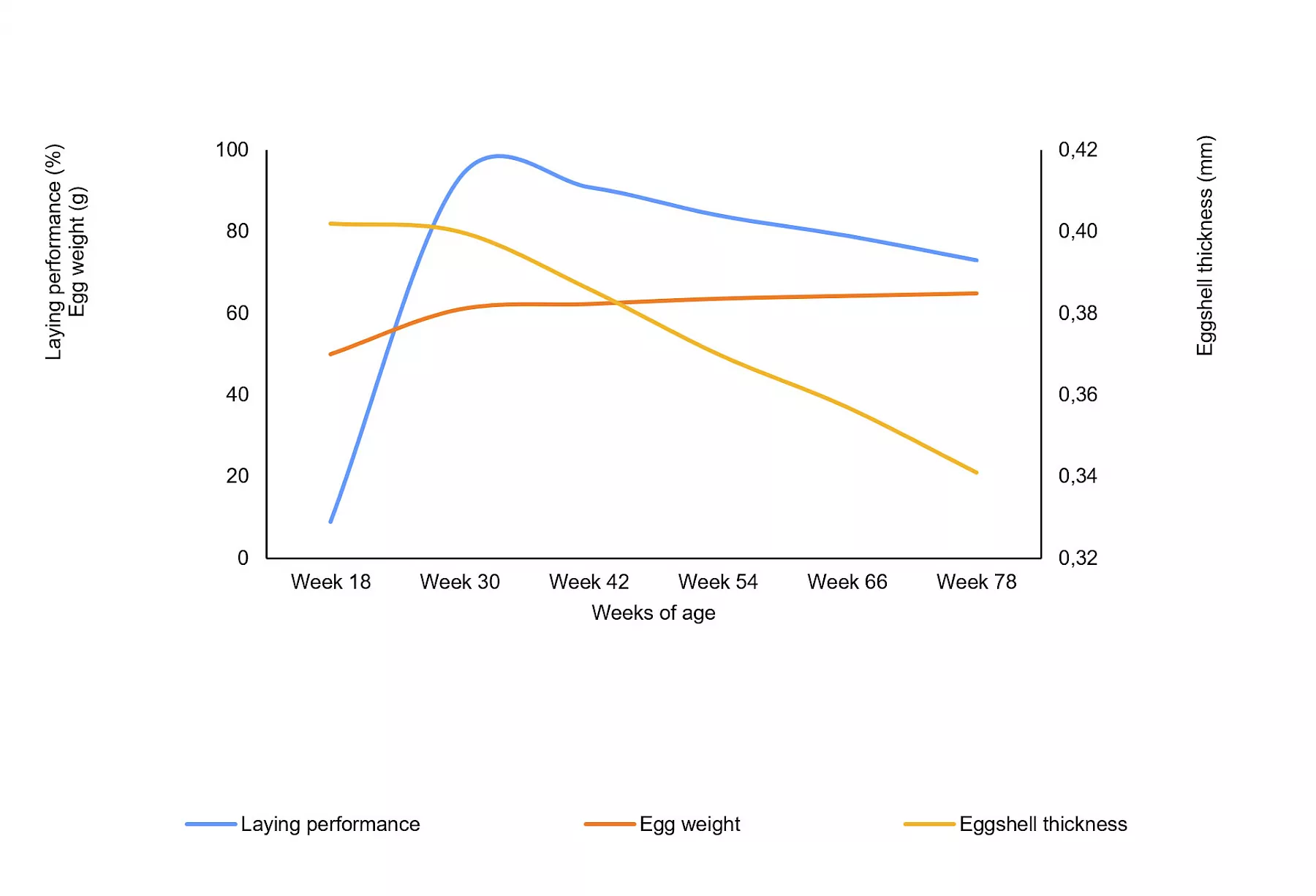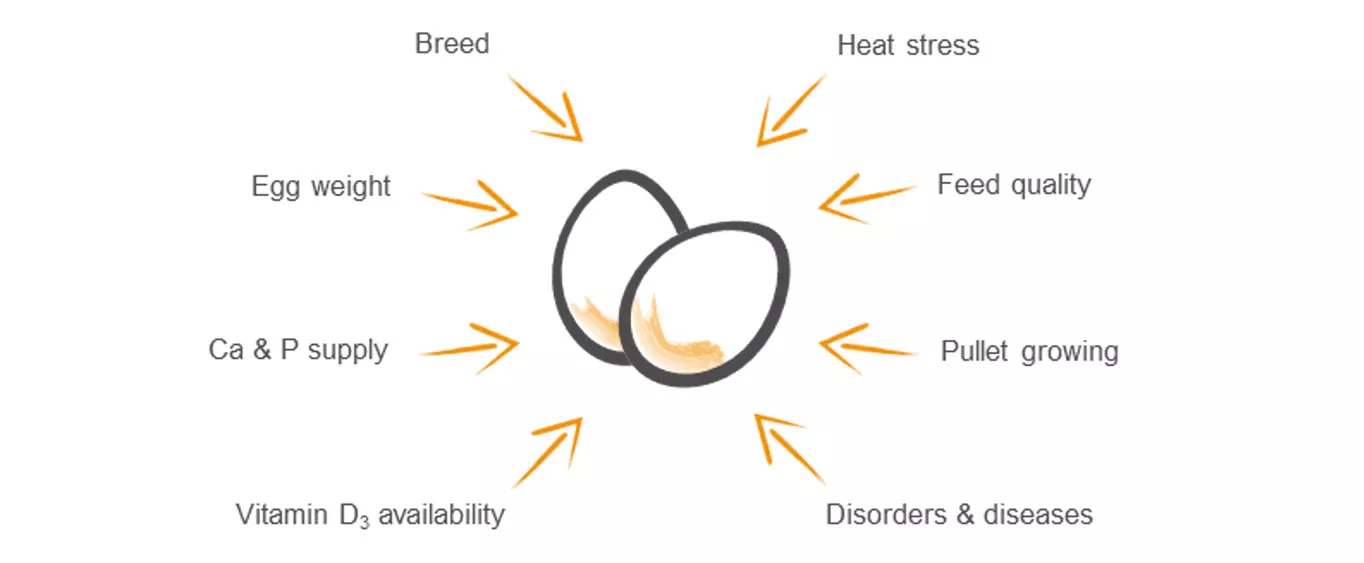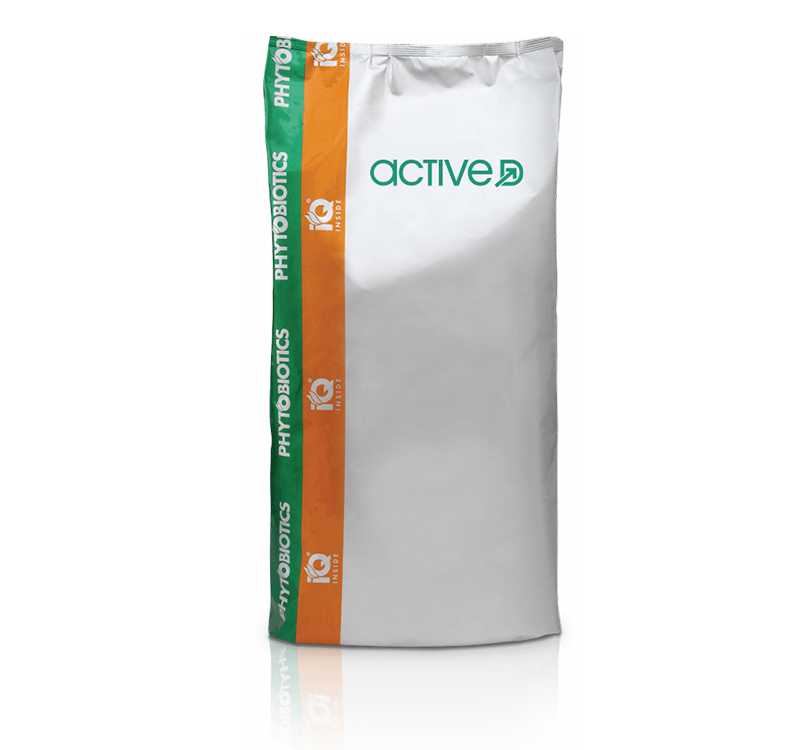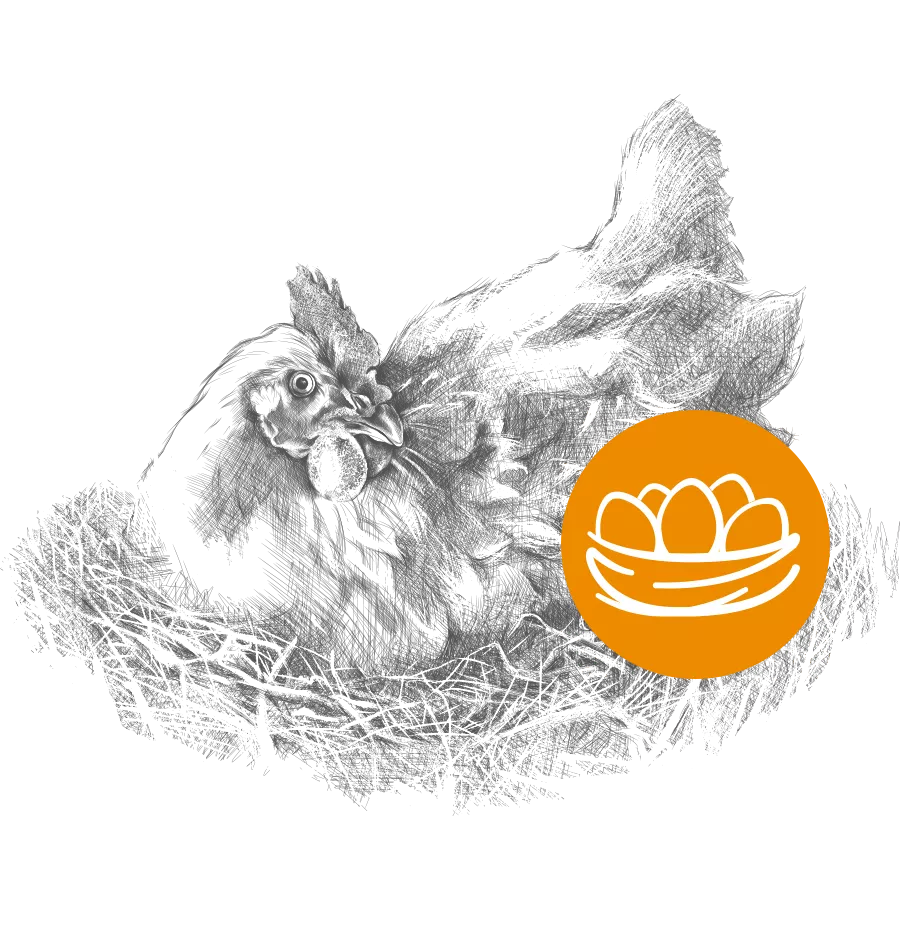Eggshell quality throughout the production cycle
How to maintain high-quality eggs?
Challenges in the egg production have become more complex in recent years and meeting the growing demand for eggs will be an important goal for farmers, breeders and feed producers. In addition to breeding progress, specific production influences must be considered. Above all, the supply of essential nutrients for adequate egg quality must be guaranteed over the entire production cycle of a laying hen.
Egg laying cycle in commercial production
At around 18 weeks of age, the laying hens start their egg production. The laying peak is reached approximately at week 30, after which the performance drops steadily. While the egg weight increases throughout the production cycle, the eggshell mass remains almost the same. Consequently, the eggshell becomes thinner and thus egg quality is poorer in the later stages of production. The egg production period of the laying hen is limited. Once the number of saleable eggs per hen is too low from an economical point of view, the hen either is molted or culled.

Which factors influence egg laying performance and quality?
Apart from the already mentioned decrease in eggshell thickness, there are several factors influencing the number of saleable eggs during the production cycle. Feed hygiene, for example the mycotoxin content of feeds, has a big influence. Mycotoxins damage the liver which in turn negatively affects eggshell formation. Another factor, which is more difficult to control, is the age-dependent decrease of calcium (Ca) and phosphorus (P) availability. As the absorption of these nutrients tends to decline, the metabolism of Ca and P becomes less efficient, leading to a depletion of Ca-reserves in the medullary bones. Nutritional management measures can support the Ca- and P-metabolism. Using pre-lay feed formulations, split feeding, adjusting the form and amount of limestone, and maintaining a stable Ca: P ratio are some examples. Furthermore, the supply of vitamin D should be considered, as it is essential for the hens’ Ca- and P-metabolism.
In conclusion, the performance of laying hens naturally decreases with age. However, adjusting feed formulations and focusing on an adequate vitamin D supply and liver health can help to flatten the curve and maintaining laying performance.


About the author
Murat Devlikamov studied Agricultural Sciences at the University of Giessen, Germany, and did his Master’s thesis on broiler nutrition. At Phytobiotics, he is the Product Manager of the plant-based product Active D. Murat conducts scientific research on targeted vitamin D supply to create practical solutions for animals in periods of high metabolic challenge.
Active D – Strong, stable, steady.
The brand-new formulation from selected plant ingredients complements and optimises the supply of vitamin D from the feed. Phytobiotics Active D contains highly available herbal vitamin D glycosides which relieve the liver and kidneys as well as triterpenoids which support the muscle metabolism and cell integrity. In a natural way, Active D supports laying and growth performance of poultry in challenging production stages.


